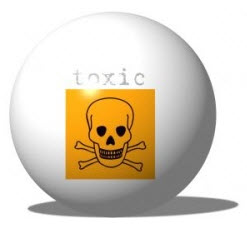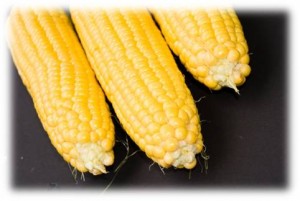 Restoring your health after years of gluten exposure can be challenging. The video below is part 1 of this 5 part series on health restoration…
Restoring your health after years of gluten exposure can be challenging. The video below is part 1 of this 5 part series on health restoration…
If you would like to join Gluten Free Society, click here…
 Restoring your health after years of gluten exposure can be challenging. The video below is part 1 of this 5 part series on health restoration…
Restoring your health after years of gluten exposure can be challenging. The video below is part 1 of this 5 part series on health restoration…
If you would like to join Gluten Free Society, click here…
 A recent paper published in the Annals of the New York Acedemy of Sciences connects intestinal permeability (AKA leaky gut syndrome) with the development of autoimmune diseases. The authors base their findings on what we know of celiac disease and Type I Diabetes. Both diseases share the same HLA-DQ genetics. As well, they both share the same environmental trigger -Gluten.
A recent paper published in the Annals of the New York Acedemy of Sciences connects intestinal permeability (AKA leaky gut syndrome) with the development of autoimmune diseases. The authors base their findings on what we know of celiac disease and Type I Diabetes. Both diseases share the same HLA-DQ genetics. As well, they both share the same environmental trigger -Gluten.
Ann N Y Acad Sci. 2009 May;1165:195-205.

Most people assume that celiac disease and gluten sensitivity are the same thing. This archaic thought is rapidly changing. Although it is well established that gluten often impacts the villi of the small intestine, it has been shown to affect the body in a variety of other ways. These differences account for the massive failure of doctors to diagnose gluten sensitivity. Below is a diagram of environmental triggers to intestinal permeability (leaky gut). You will find that gluten sensitivity can directly and indirectly contribute to this problem. To the keen observer, this diagram illustrates why simple antibody testing fails to accurately diagnosis gluten sensitivity. Antibody production is only one lab component of a multi-faceted problem.
Click on image to enlarge…
Leaky gut contributes to autoimmune disease. The only known cause for any autoimmune disease is gluten sensitivity. We are blind fools to ignore this connection because it does not fit the status quo of the allopathic medical paradigm. If you have autoimmune disease and have not investigated gluten sensitivity as a contributing factor, you should. Learn more about genetic testing for gluten sensitivity now!
You can read more about gluten sensitivity on our gluten free resource page…
 Liz Vaccariello, Editor in Chief of Prevention Magazine, recently interviewed several experts on food healthfulness and safety. She asked, “What foods do you avoid”, and was surprised by some of the answers.
Liz Vaccariello, Editor in Chief of Prevention Magazine, recently interviewed several experts on food healthfulness and safety. She asked, “What foods do you avoid”, and was surprised by some of the answers.
1. Canned Tomatoes, Canned Soup, Canned Green Beens
Recently, Consumer Reports magazine found the chemical bisphenol-A (BPA) in the resin lining of many common food brands. BPA is used for food preservation, but is a synthetic estrogen that has been linked to many illnesses including heart disease, diabetes, and reproductive issues. Consumer Reports found the highest levels to be in canned green beans and soups. Fredrick vom Saal, PhD, an endocrinologist at the University of Missouri who studies bisphenol-A (BPA) states that acidic foods such as tomatoes can also cause the BPA to leach into the food, at a rate that exceeds 50 micrograms per liter. Dr. Vom Saal recommends choosing tomatoes in glass bottles or Tetra Pak boxes.
2. Corn-Fed Beef
Cows evolved eating grass, but today’s farmers feed their animals corn and soybeans, which fatten the animals faster for slaughter. A recent study conducted by the USDA and researchers from Clemson University found that corn-fed beef is lower in beta-carotene, vitamin E, omega-3 fatty acids, calcium, magnesium, and potassium than grass fed beef. It is also higher in saturated fat. A study from Purdue University found that corn fed beef contains higher levels of omega-6 fatty acids, which may encourage inflammation in the body and may lead to bone loss. Grass-fed beef can be found at specialty grocers, farmers markets, and nationally at Whole Foods.
3. Microwave Popcorn
A big danger from microwave popcorn is burns from the steam that escapes when the bag is opened. Two chemicals in microwave popcorn have been linked to serious illness. In January 2008, the top four manufacturers removed diacetyl as a butter-flavoring agent in the products because it was linked to lung injuries. ConAgra Foods, General Mills, and the American Pop Corn Company (that sells Orville Redenbacker, Act II, Pop Secret and Jolly Time) have changed their recipes to exclude diacetyl.
More recently, chemicals such as perfluorooctanoic acid (PFOA) have been found to be a part of the lining of the bag, which leaches into the food during microwave cooking. This chemical has been linked to infertility in a recent study from UCLA. In animal testing, the chemicals are linked to liver, testicular, and pancreatic cancer. Olga Naidenko, PhD, a senior scientist for the Environmental Working Group, says “[PFOA] stay in your body for years and accumulate there.” Some larger manufacturers have promised to phase out PFOA by 2015 under a voluntary EPA plan, but until then it is best to make popcorn using canola oil in a covered saucepan or skillet.
4. Nonorganic Potatoes and Carrots
Root vegetables absorb the pesticides that wind up in the soil. In the case of potatoes, they are also treated with fungicides during the growing season, then sprayed with herbicides to kill off the fibrous vines before harvesting. The potatoes are treated once more at the processing plant to delay sprouting. Jeffrey Moyer, chair of the National Organic Standards Board, says that washing will not remove all the chemicals that have been absorbed into the flesh of the vegetables, and encourages the purchase of organic produce.
5. Farmed Salmon
Salmon is promoted as one of the healthiest foods for the heart because it contains high levels of omega-3 fatty acids. However, when choosing salmon, it is best to choose wild-caught Alaska salmon over farmed salmon. Farmed salmon has been shown to contain 10 times more toxins, including Polychlorinated biphenyls (PCB) and dioxin, than wild salmon. Farmed salmon are fatter, and the PCBs are sequestered into the fat and remain there. In addition, salmon farms can harbor parasites, such as sea lice and kudoa thyrsites, so fishers use pesticides and antibiotics that can become part of your fish dinner. Many industrial salmon farms use artificial colorings to make the fish more appealing to consumers, some of which can be harmful to health.
If a package says fresh Atlantic salmon, it is likely farmed, according to David Carpenter, MD, director of the Institute for Health and the Environment at the University at Albany and publisher of a major study in the journal Science on contamination in fish. He states there are no longer commercial fisheries for wild Atlantic salmon.
6. Milk Produced with Artificial Hormones
Rick North, project director of the Campaign for Safe Food at the Oregon Physicians for Social Responsibility, encourages the purchase of hormone-free or organic milk. Conventional milk farmers treat their dairy cattle with recombinant bovine growth hormone (rBGH or rBST) to boost milk production. These can lead to a higher level of a hormone in the casein called insulin-like growth factor (IGF-1) in humans that is linked to breast, prostate, and colon cancer. Organic milk farmers cannot use artificial hormones in their dairy cattle. Other manufactures may list rBGH-free or rBST-free on the package label.
7. Nonorganic Apples and Pears
Many fruits are treated with pesticides. Those in which the peeling or skin is consumed are at highest risk to people. Over time, farming techniques for fruits such as apples have caused the fruit to lose its resistance to pests, and therefore they are sprayed more frequently. Washing the fruit thoroughly and removing the skin is recommended, but this may not eliminate the chemical residue entirely. In addition, removing the peeling removes many of the healthful benefits of fruit, such as fiber. According to the Daily Green, the best fruits to buy organic include apples, pears, grapes, and cherries.
This is an excellent article shedding light on many of the foods not commonly considered unhealthy.
Farm raised fish and corn fed beef are often overlooked. People generally do not consider the source of their animal foods.
Other foods that should be added to the list include:
Following these simple rules can help you steer clear of poor food choices:
Is this food healthy? Am I really hungry?
Remember, your body and your health are gifts from God. Don’t desecrate your temple!
 A Study published in the journal Gut identified that corn gluten caused an inflammatory reaction in patients with celiac disease.
A Study published in the journal Gut identified that corn gluten caused an inflammatory reaction in patients with celiac disease.
Source:
Corn is a grain. Corn has gluten. Many believe that corn gluten does not induce damage the same way that wheat, barley, and rye do. The fact of the matter is, gluten has not been studied adequately. Most of what we know about celiac disease and gluten have to do with gliadin (the gluten found in wheat only). As a physician with 10 years of experience treating gluten sensitivity, I have seen corn be a severe problem for the majority of gluten intolerant patients. Many claim that they don’t react to corn and feel fine after eating it. The same can be said of those with silent celiac disease. Remember that a lack of symptoms does not mean that internal damage is not occurring. All of that being said, we should not make assumptions. Common sense and intelligent thought should be used as a basis for our dietary decisions. Gluten aside, consider the following about corn:
Many consumers bow to the alter of “Gluten Free” packaged foods as if the label is a safety net. “Gluten Free” on the package does not mean that the food is healthy. Do not deny yourself the God given right to be healthy.
Remember, corn has gluten. The gluten in corn has not been adequately studied. Many studies to date have shown that corn induces inflammatory damage in those with gluten sensitivity. Almost half of all celiac patients don’t get better on a wheat, rye, and barley free diet. Is their a link between corn and refractory celiac disease? At this point in time we do not know for sure, but 10 years of clinical experience with gluten intolerant patients reacting to corn is enough data for me.